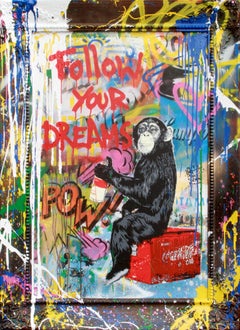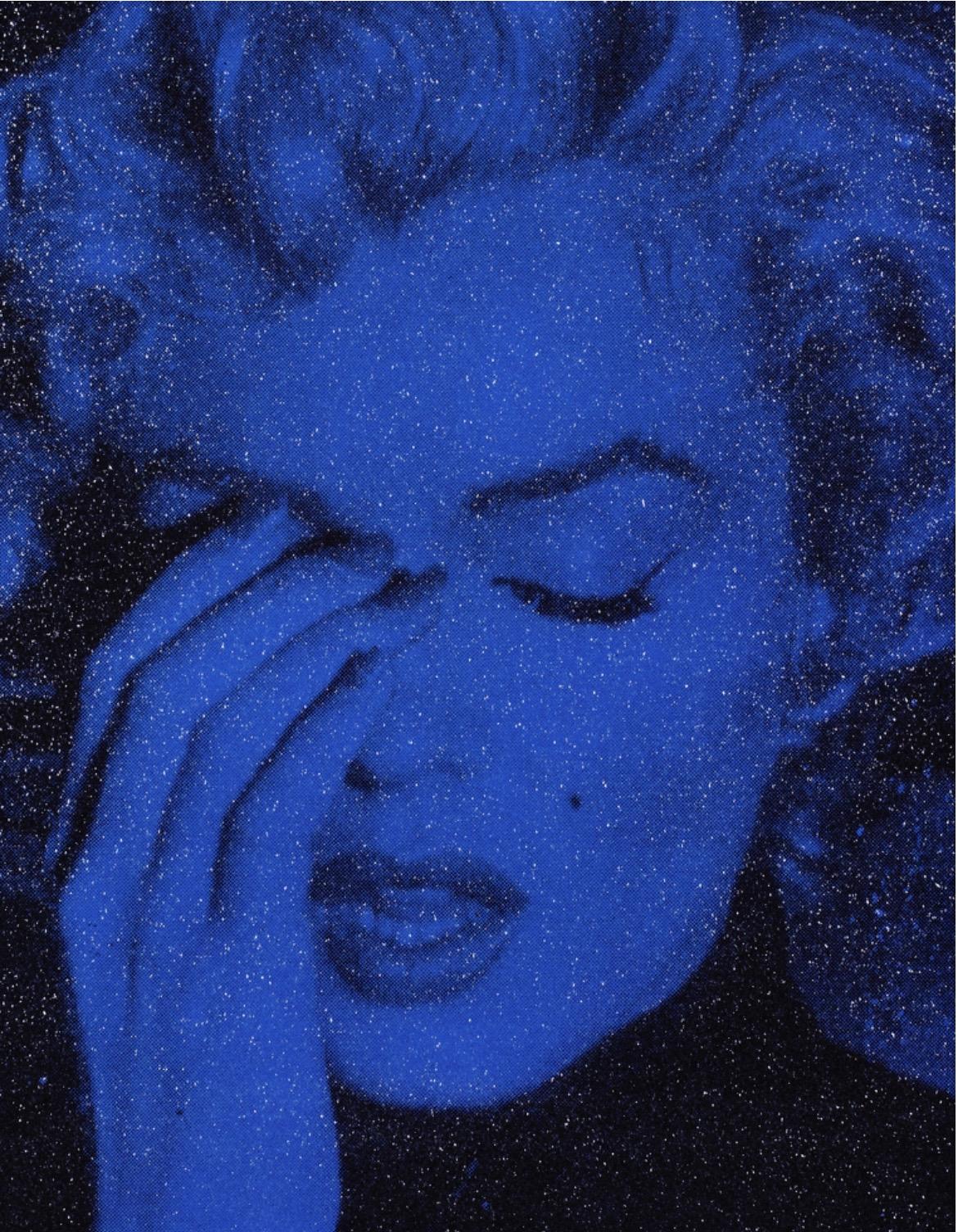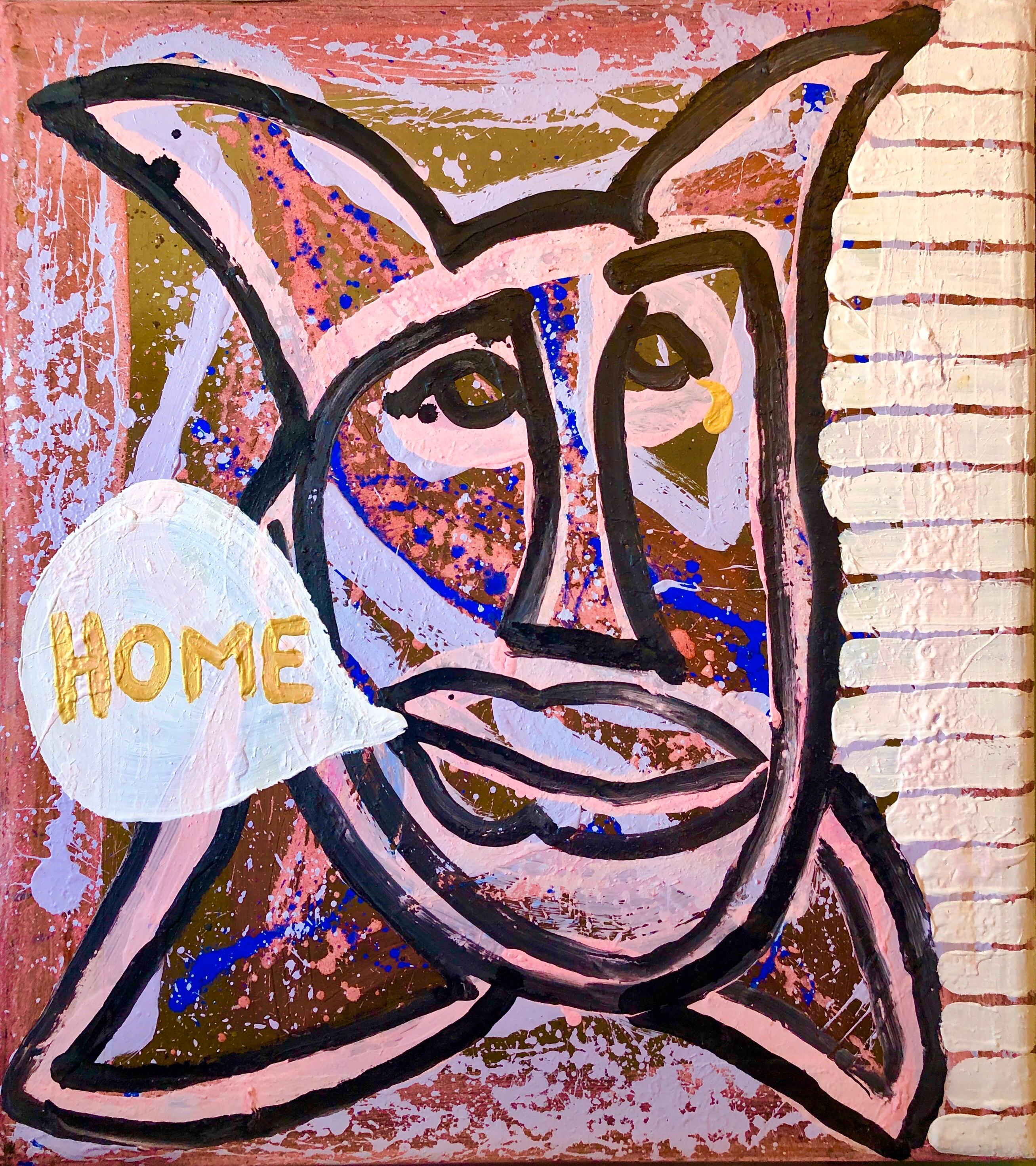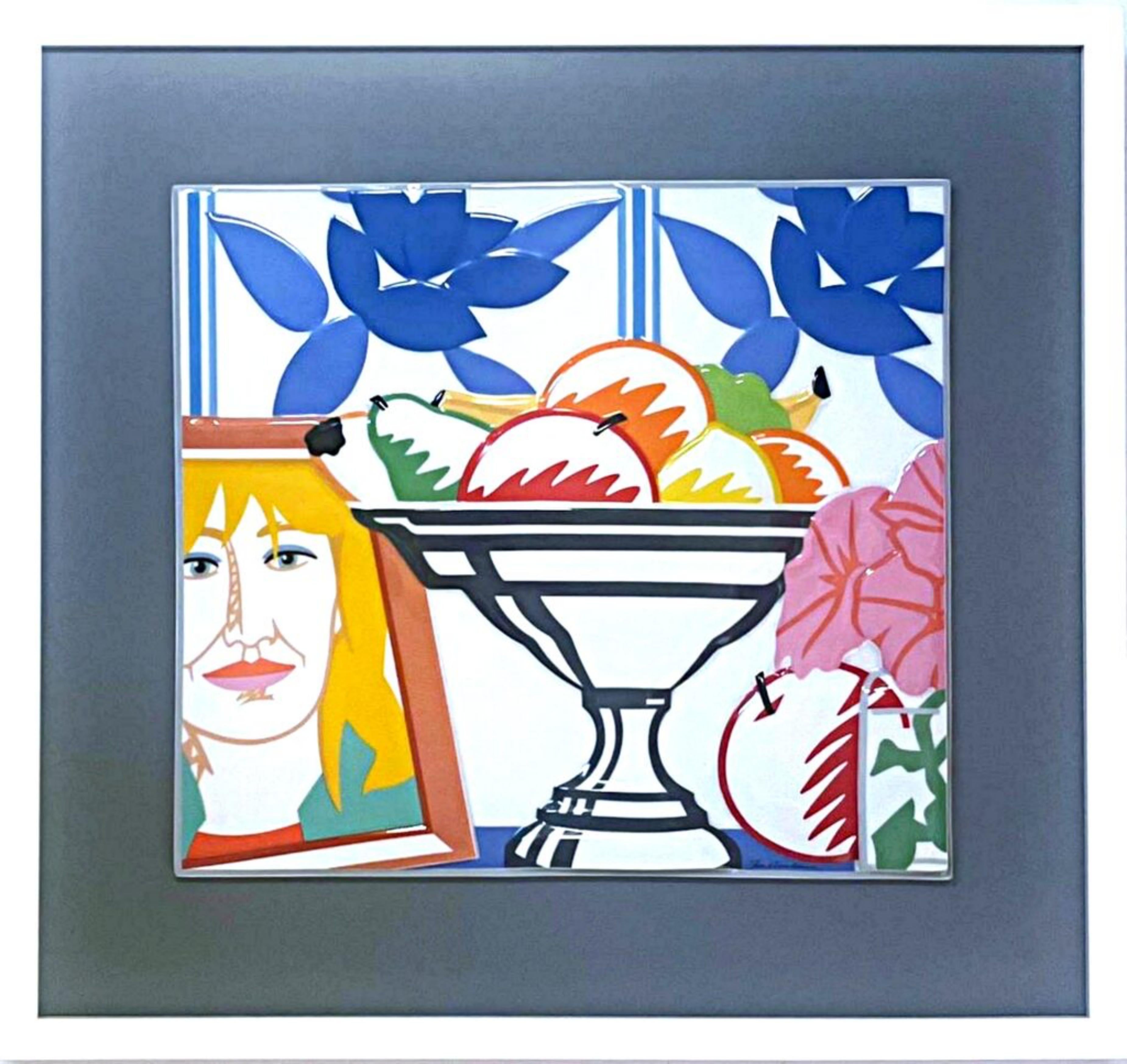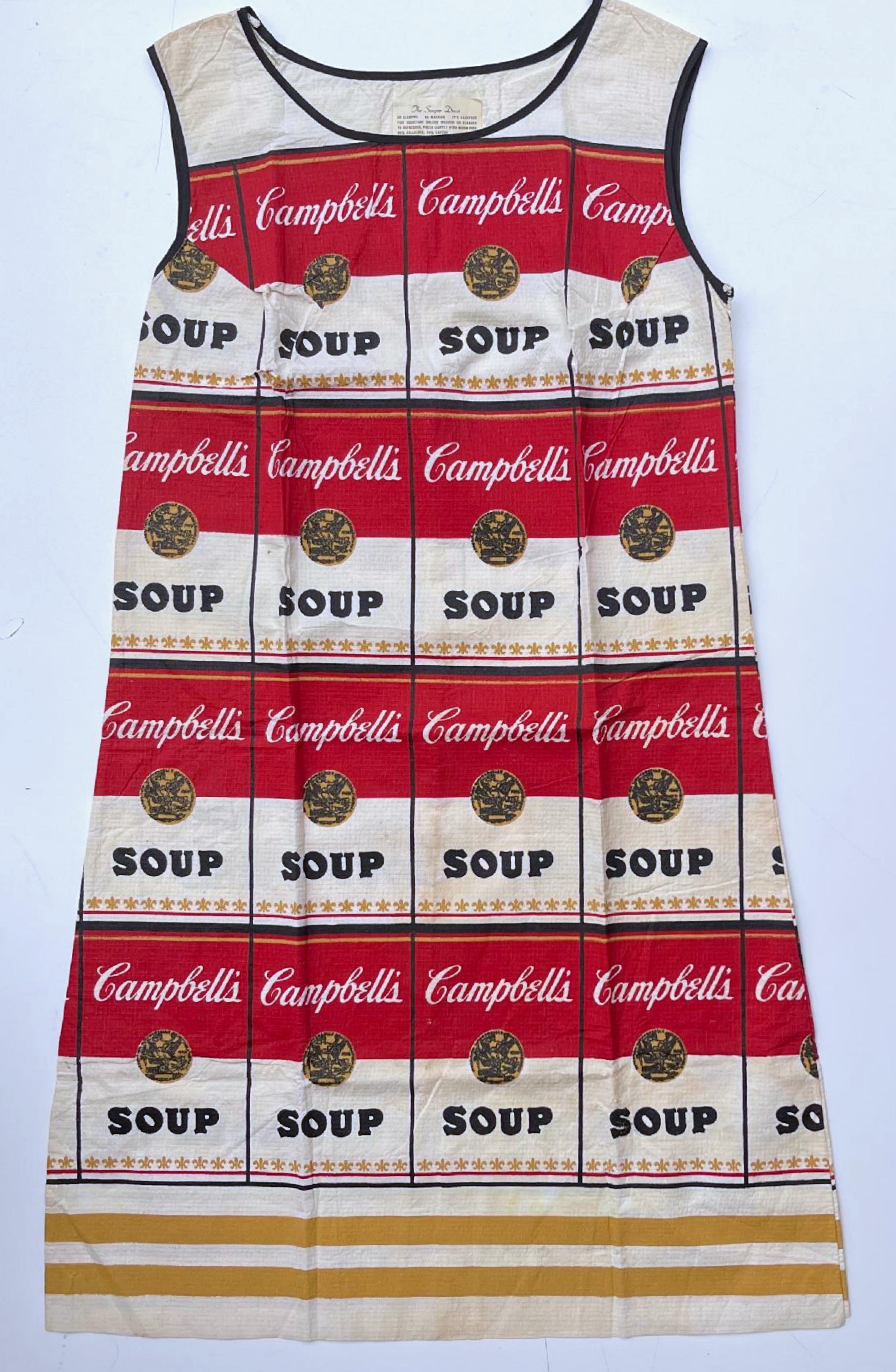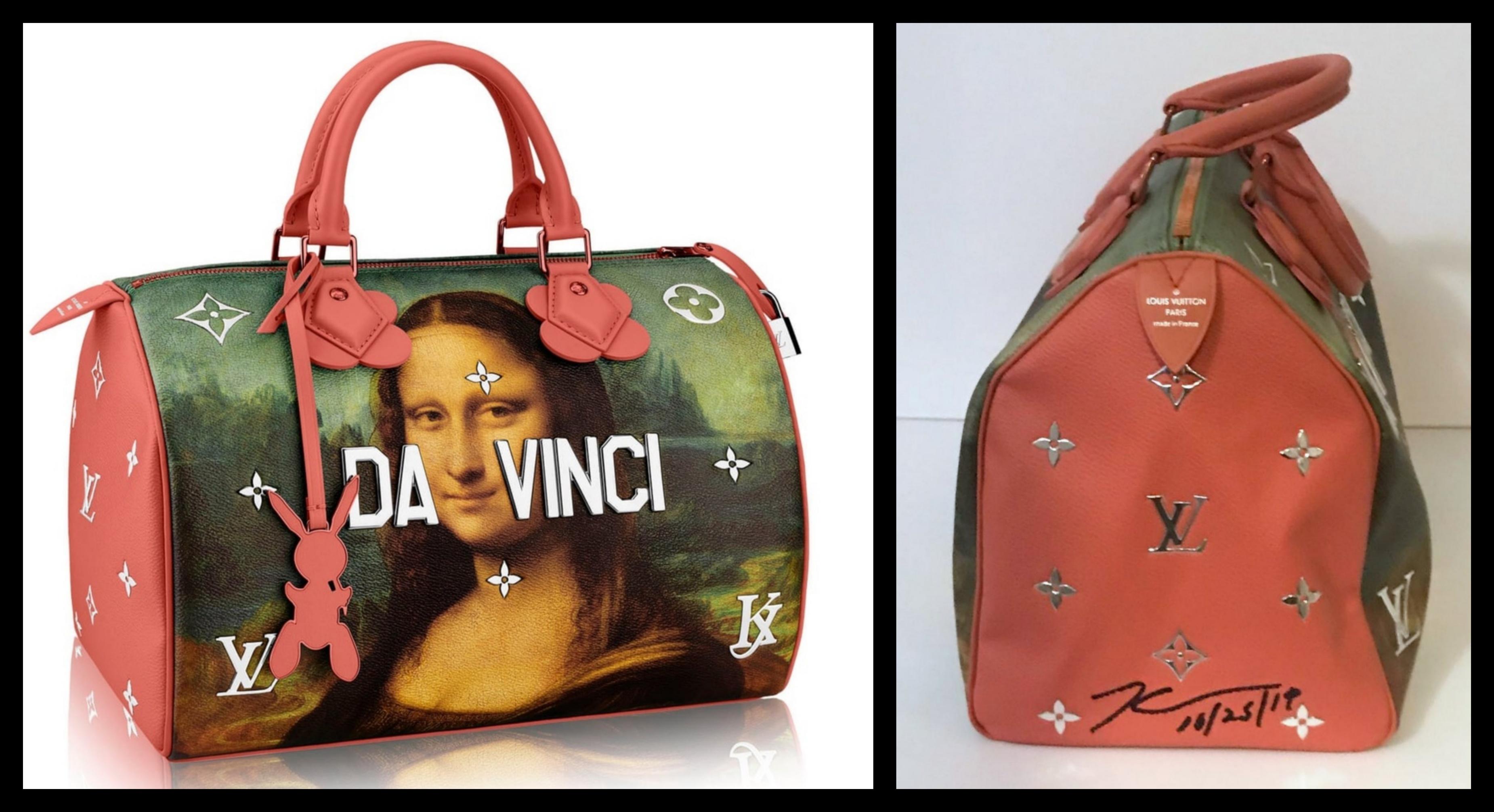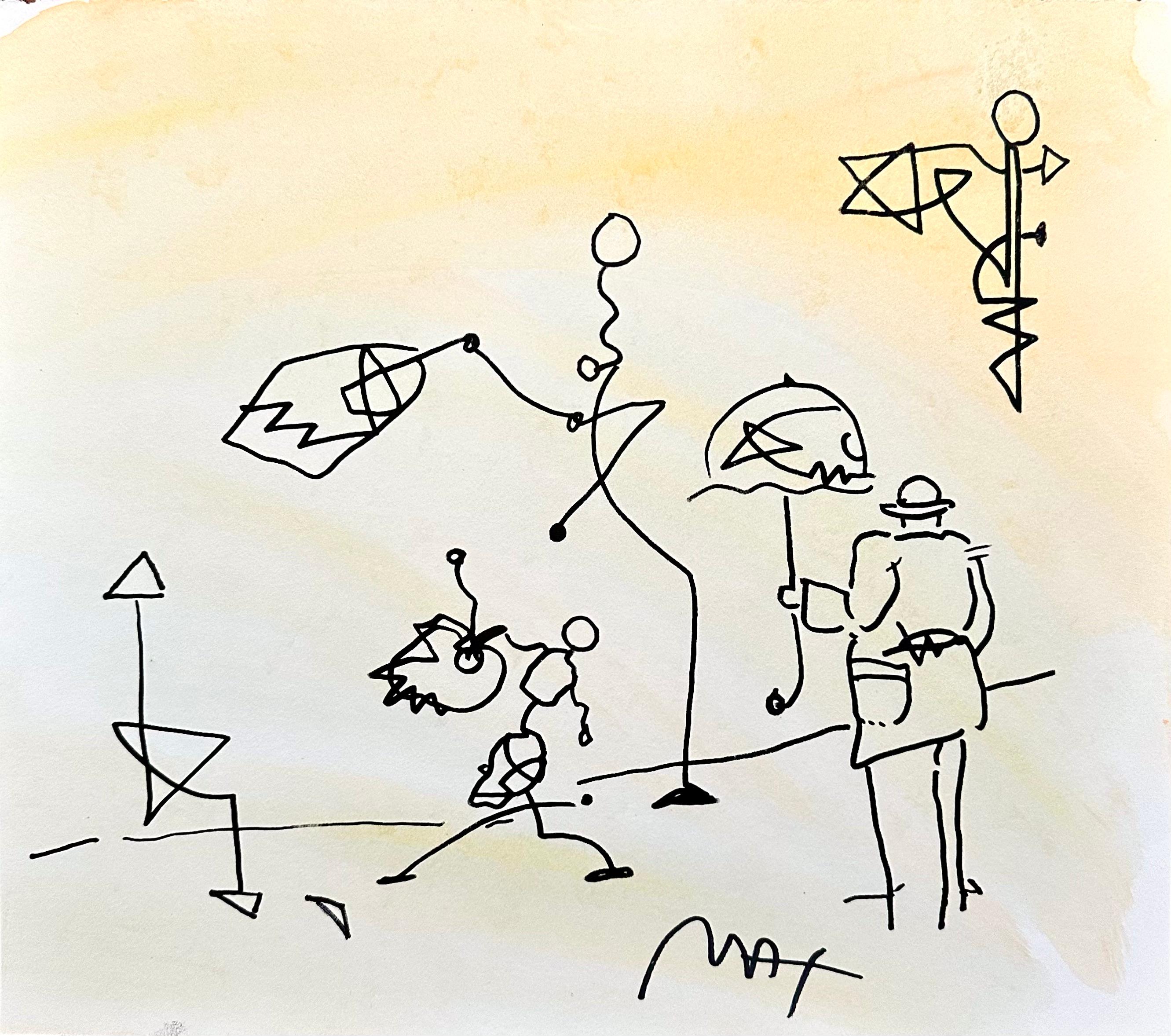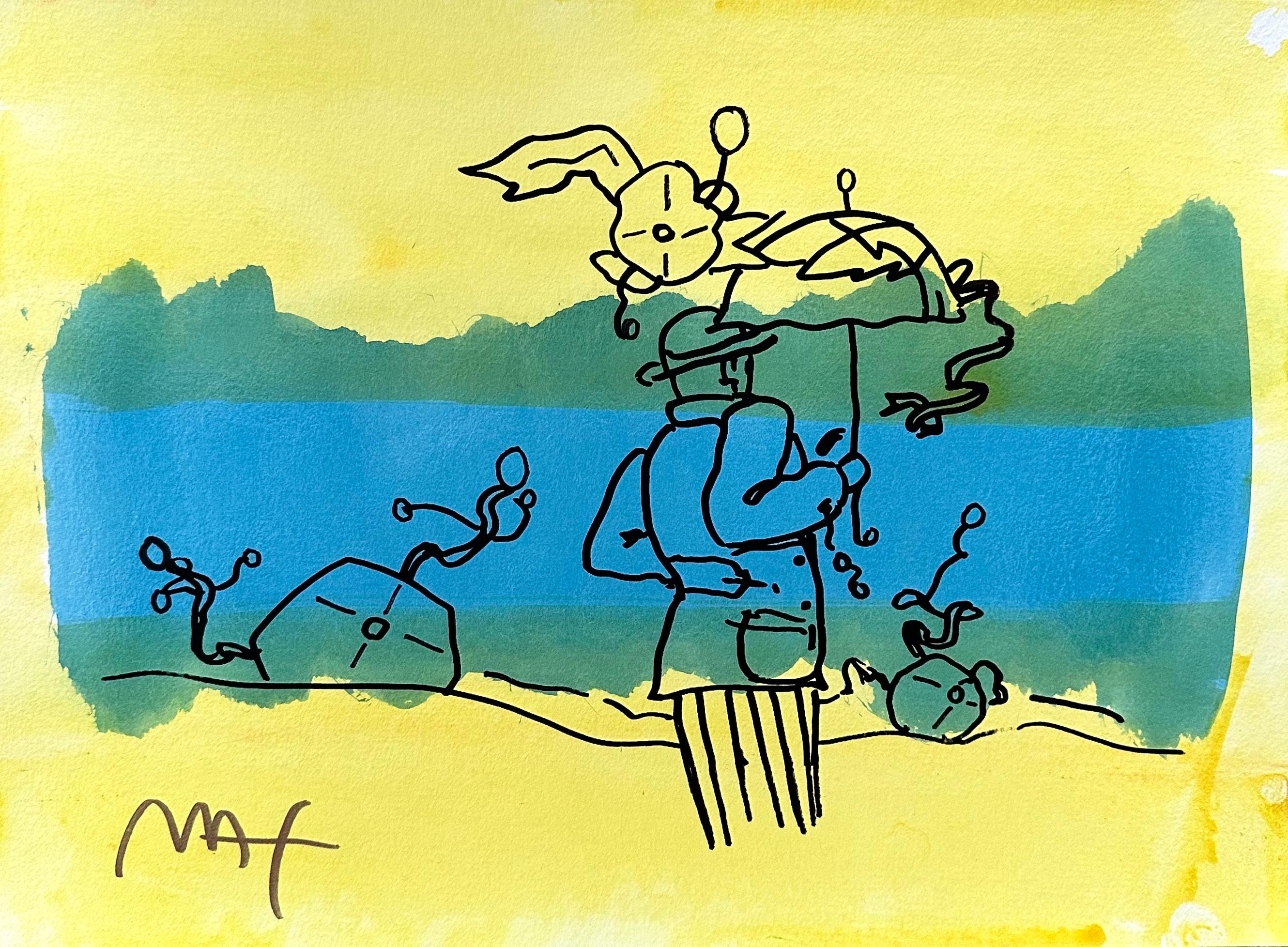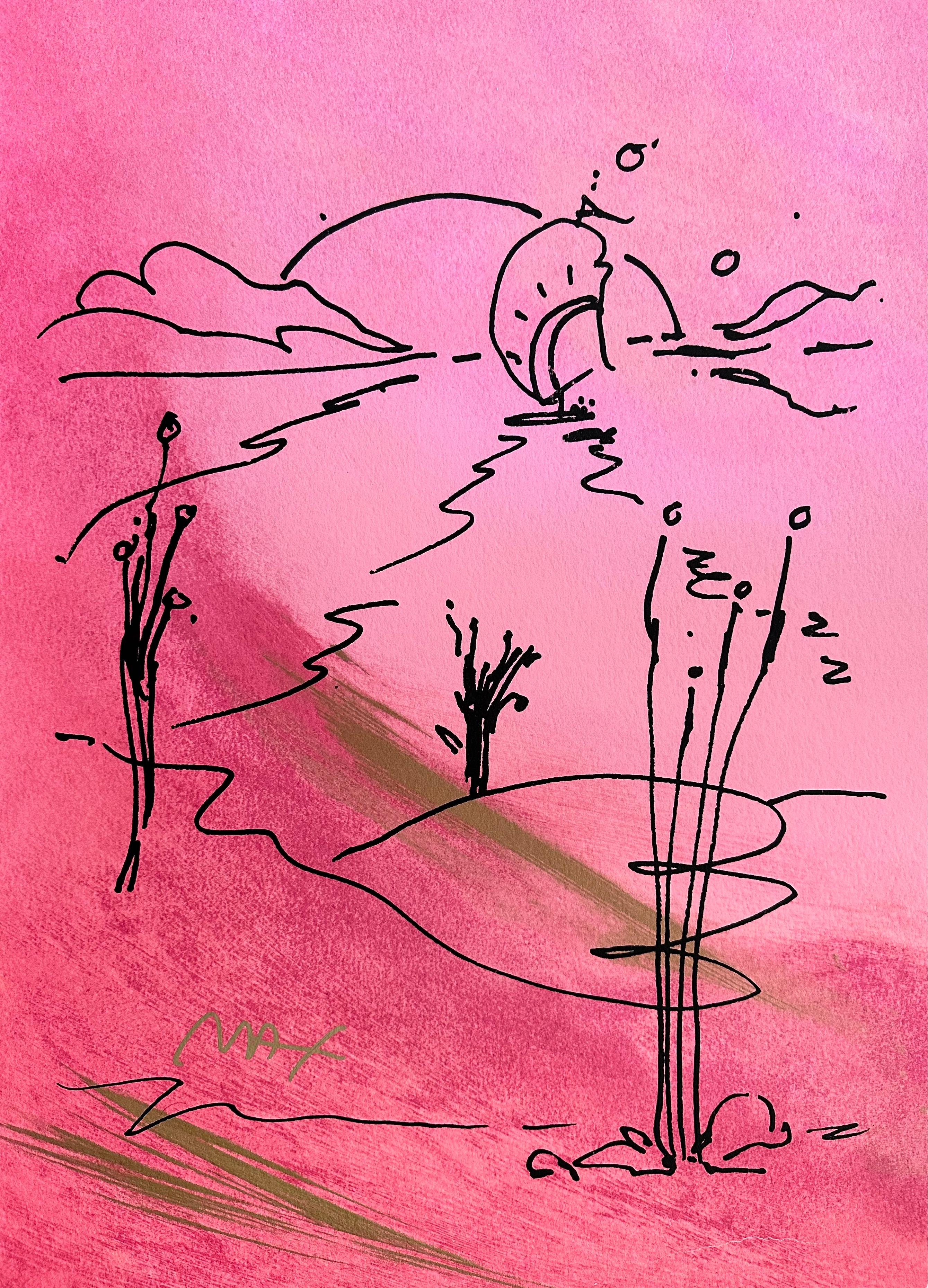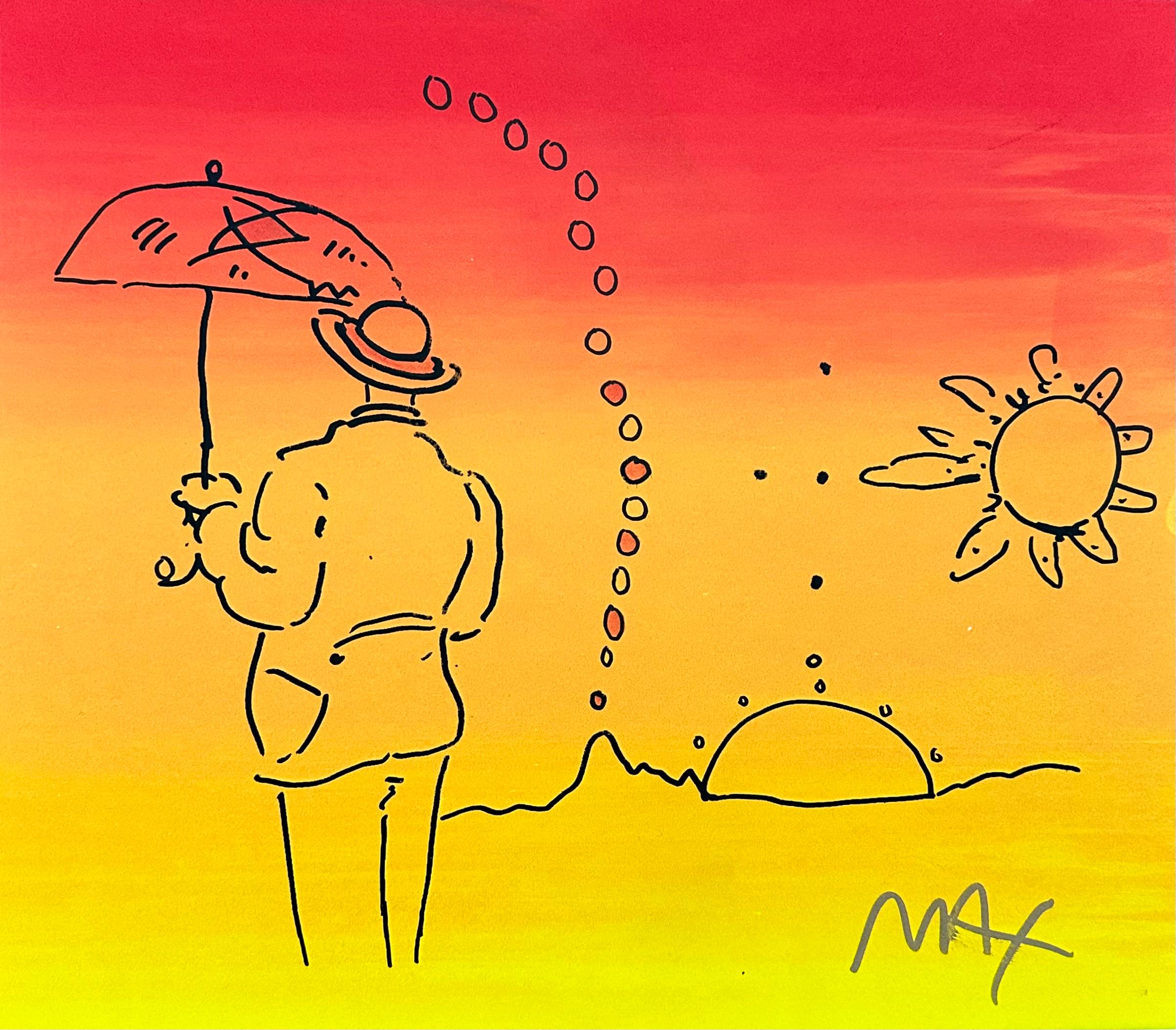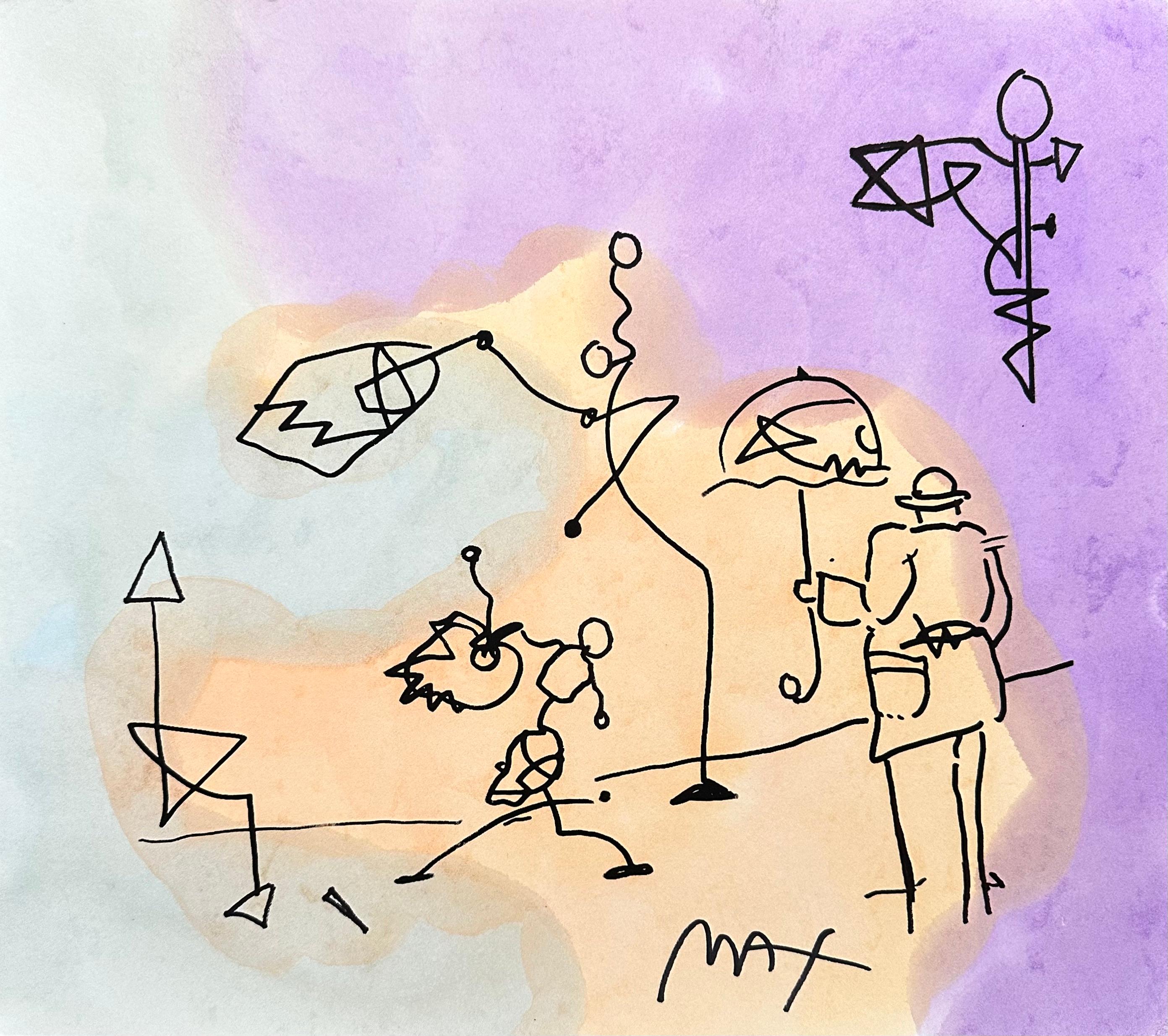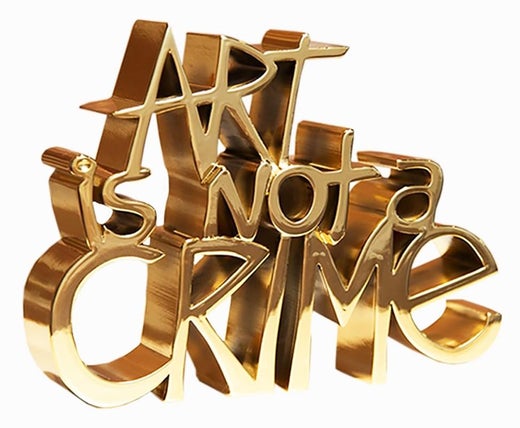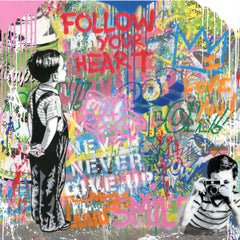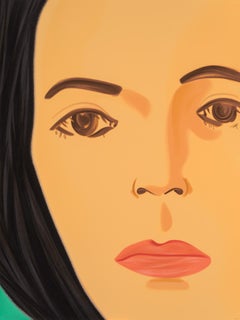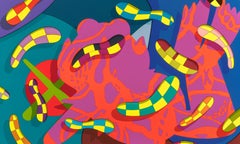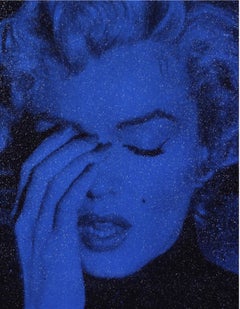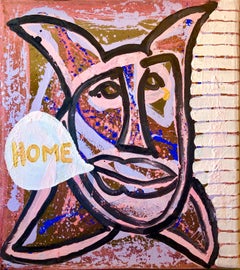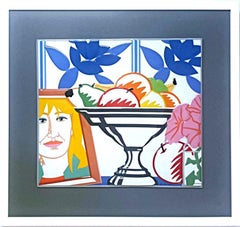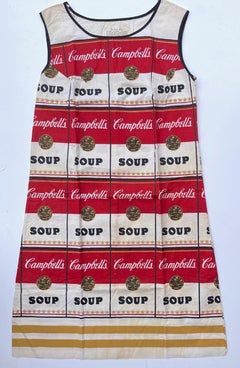Robin Winters (b. 1950) hand signed; 1986. Acrylic, rhoplex and powdered pigment on screenprint
Dimensions: 36”h, 32”w
Title: "Home"
Provenance: Brooke Alexander Gallery, New York, New York. Gallery label verso.
Robin Winters is known for his conceptual works in a wide variety of two- and three-dimensional media and performance/durational art. The reliquary and other recurring themes that appear in his works can be seen in the collection of sculptures and paintings offered in this sale (lots 170, 171, 173, 393, 396). Gallery label to reverse: Brooke Alexander Gallery, New York, New York. Provenance: Brooke Alexander Gallery, New York, New York.
Robin Winters (born 1950 in Benicia, California) is an American conceptual, multi-disciplinary, artist and teacher based in New York. Winters is known for creating solo exhibitions containing an interactive durational performance component to his installations, sometimes lasting up to two months. Winters first emerged in the burgeoning Soho NYC art scene of the 1970s. An early practitioner of the Relational Aesthetics (social interaction as an art medium) Winters also created in works through sculpture, installation, performance, painting, drawing and prints. His art maintains a whimsical spirit, and he often returns to ongoing themes involving faces, boats, cars, bottles, hats and jesters or fools. Winters has incorporated such devices as blind dates, double dates, dinners, fortune telling, and free consultation in his performances. Throughout his career he has engaged in a wide variety of media, such as performance art, film, video, writing prose and poetry, photography, installation art, printmaking, drawing, painting, ceramic sculpture, bronze sculpture, and glassblowing.
Winters was born in Benicia, California in 1950 to lawyer parents. As a child his hobby was collecting glass bottles found on the beach and under old buildings, which would later influence him as an artist. In 1968, Winters had his first durational performance, entitled Norman Thomas Travelling Museum. The artist drove a Volkswagen bus decorated in collage, many of the images relating to current events and politics. Inside was what the artist described as a “reliquary” containing many objects, including a bottle collection. Winters took the van to shopping centers and even as far as Mexico. That same year, Winters opted not to register for the military draft. Although he was deemed fit to serve, Winters refused. In 1975 the resulting legal proceedings finally came to a close after it was proven that the artist had been harassed by the local draft board. In his teens and early twenties, Winters became acquainted with several local artists who helped shape his aesthetic, most notably Manuel Neri and Robert Arneson. By the early 1970s, Winters was studying at the San Francisco Art Institute (SFAI) and had relocated to San Francisco. At this time Winters became friends with the Bay Area conceptual artists Terry Fox and Howard Fried, and participated in several of Fried's performance works. In 1972 Winters was accepted into the Whitney Independent Study Program in New York City. After coming to New York City, Winters helped support himself by working for various artists, among them the performance artist Joan Jonas and sculptor Donald Judd. In 1974, Winters performed The Secret Life of Bob-E or Bob-E Behind the Veil eight hours a day, five days a week for a month in his studio apartment. Behind a one-way mirror the audience could watch Winters play the character of Bob-E, whose goal was to make a monument for everyone in the world in the form of blue and yellow rubber top hats. By the end of the month the artist had constructed 262 hats. The following year, Winters was invited to take part in the Whitney Museum's 1975 Biennial Exhibition. Entitled W.B. Bearman Bags a Job or Diary of a Dreamer. These meetings led to the formation of the Group Collaborative Projects, or Colab, of which Winters is a founding member. Also in 1976, Winters formed the partnership “X&Y” with fellow artist Coleen Fitzgibbon that would last two years. Together they performed a series of shows in the Netherlands, most notably a show entitled Take the Money and Run. Performed at De Appel in Amsterdam, the show involved the artists robbing their audience. The following day the audience was given an apology, as well as the opportunity to retrieve any valuables and participate in a lottery to win the artists’ services. They also made a Super 8 film in NY called Rich-Poor, in which they asked people on the streets their thoughts on the rich and poor.
In 1980 Winters participated in The Real Estate Show and in Absurdities at ABC No Rio. That same year he and artists Peter Fend, Coleen Fitzgibbon, Peter Nadin, Jenny Holzer, and Richard Prince also formed The Offices of Fend, Fitzgibbon, Holzer, Nadin, Prince & Winters. This short-lived collective was based out of an office on lower Broadway and offered “Practical Esthetic Services Adaptable to Client Situation”, as stated on their business card. Their goal was to offer their art as “socially helpful work for hire”. In June of that year Winters participated in The Times Square Show, Colab's most well-known exhibition. The month-long show took place in a four floor building on West 41st Street and was densely packed with art. To cap off a busy year, Winters also became one of the first artists to join the Mary Boone Gallery, showing a successful solo exhibition in 1981. His work was shown in the New York/New Wave show in 1981 at MoMA PS1 along with Jean-Michel Basquiat, Roberta Bayley, William S. Burroughs, David Byrne, Sarah Charlesworth, Larry Clark, Crash (John Matos), Ronnie Cutrone, Brian Eno, Peter Fend, Nan Goldin, Keith Haring, Ray Johnson, Joseph Kosuth, Marcus Leatherdale, Christopher Makos, Robert Mapplethorpe, Elaine Mayes, Frank Moore, Kenny Scharf and others. In 1982, Winters had his first solo exhibition in Los Angeles at the Richard Kuhlenschmidt Gallery. At the Mo David Gallery in 1984, Winters created an installation piece that consisted of a floor of plaster tiles. Underneath each tile, hidden from view, was a drawing. He designed the stage sets for the musician Nico, and assisted French artist Orlan, American artist Stuart Sherman, and American poet Gregory Corso. Two years later Winters was invited to take part in Chambres d’Amis (In Ghent there is Always a Free Room for Albrecht Durer) in Ghent, Belgium. In it, 51 artists created installations in 50 different sites, mostly private homes. Winters chose the home of a local art historian. The artist made 90 drawings based on images found in the large collection of art books in the home's library. He made two copies of each drawing and placed the originals in the books themselves. One set of copies was exhibited in the sponsoring museum, Museum van Hedendaagse, as "The Ghent Drawings". The drawings were also on display at Winters’ solo exhibition at Luhring Augustine & Hodes Gallery in New York City in 1987.
In 1986, Winters had a solo exhibition at Maurice Keitelman Gallery in Brussels, Belgium, and the following year a solo exhibition at the Centre Régional d'Art Contemporain Midi-Pyrénées in Toulouse, France. Also in 1986, Winters' Playroom was held at the Institute for Contemporary Art in Boston, Massachusetts. The exhibition was part of Think Tank, a retrospective of Winters' work which traveled to the Stedelijk Museum in the Netherlands, the Centre Regional d’Art Contemporain in France, and the Contemporary Arts Center in Ohio. Winters spent a month in 1989 working with students at the San Francisco Art Institute. Never having worked with ceramics, he spent the month making numerous ceramic pieces, which were then shown in the aptly named One Month in San Francisco. Other components of the piece included Winters’ childhood bottle collection and a video showing each piece in the show filmed briefly next to a ruler.[ Also that year, Robin served as a visiting artist at the Pilchuck Glass School, where he met artist John Drury, who was then working as the school's artist liaison.
In the summer of 1990, Winters interviewed fellow artist Kiki Smith for her eponymous book, which was published later that year. That same year (1990), Winters was invited by the Val Saint Lambert glass factory in Belgium to create glassworks in their facility. Winters, artists John Drury and Tracy Glover traveled to Liege from the US, and the three in combination with two of the factories master glassblowers, realized Mr. Winters' work over six weeks time. A portion of the works, a group of glass heads and hats that the artist had produced at the factory, were exhibited in 1990 at the Centre d’Art Contemporain Geneve in Geneva, Switzerland. Later in the year they were included in his solo exhibition at Brooke Alexander Gallery in New York City. They were also shown at Facts and Rumours, an exhibition at the Witte de With Center for Contemporary Art in Rotterdam, the Netherlands in 1991. Winters had a solo exhibition at Van Esch Galerie in Eindhoven, the Netherlands called I am not Indifferent in 1991. The show consisted of paintings, glass heads, and bronze sculpture. Two years later he had another solo exhibition at the Renaissance Society at the University of Chicago, entitled Human Nature. Several hundred heads, made of glass and ceramic, lined the walls and were arranged in rings on the floor. Also on display were various paintings and bronzes. In 1994 Winters had a show at the Michael Klein Gallery in New York City entitled Notes from the Finishing Room, a solo exhibition of paintings. The artist also collaborated with fellow Benicia natives and glass artists Leroy Champagne and
Michael Nourot...
